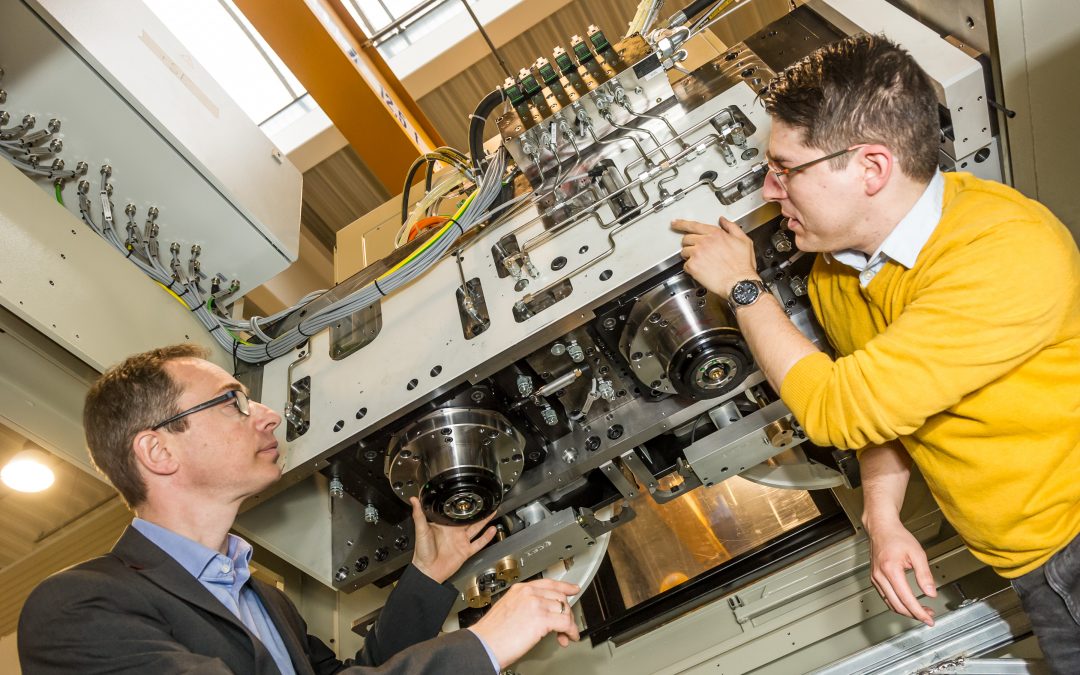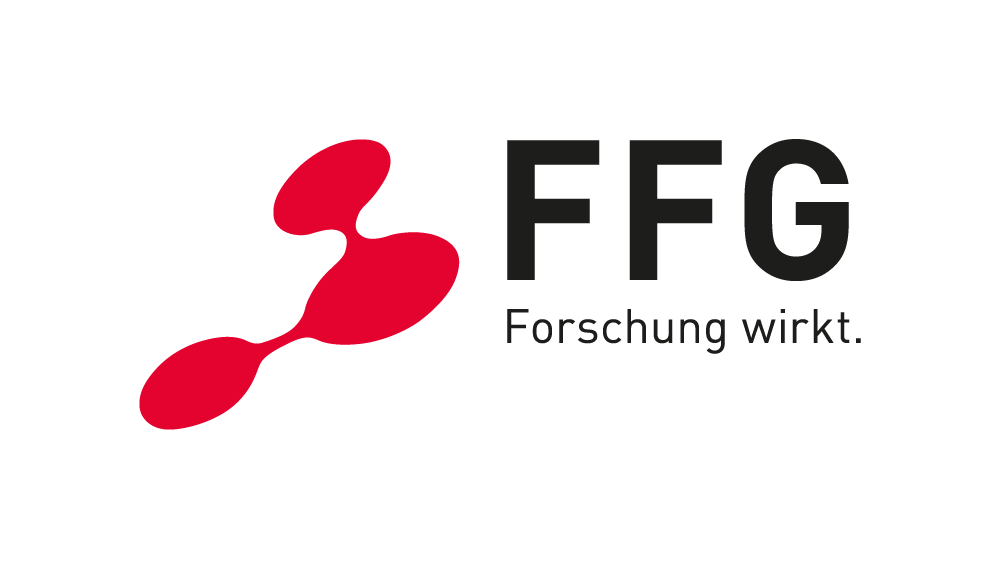Up to now, proportional valves have been the generally accepted standard in mechanical engineering. Now, Anger Machining and LCM have started a radical reappraisal in the field of hydraulics. They have replaced proportional valves with digital ones and managed to fight off the competition to secure a major order.
By securing a prestigious contract from Mercedes Benz the specialist machining company Anger Machining based in Traun, Austria, and the Linz Center of Mechatronics GmbH (LCM), caused quite a stir three years ago. The two companies had developed a totally innovative precision system for machining the valve blocks of the new nine-gear automatic gearbox (9G-Tronic). This system machines three workpieces at the same time. The spindle heads for the drill and milling attachments are fitted with a high-precision fine correction system that ensures that inadvertent workpiece position deviations are compensated. This guarantees consistently high machining quality. While these three systems at Neckartal have been providing failure-free precision results for almost three years, Anger and LCM have been carrying out further-development of the technology for other applications. In this connection, it was cost pressure above all that provided a significant boost to innovation: In hydraulics, digital valves are replacing proportional ones. It’s not just that their purchase price is considerably lower – they also reduce costs.
The best brains in competition
Again, it is an automotive sector customer that invited the heavyweights in the German mechanical engineering industry – and of course Anger Machining from Austria – to compete for a major contract. In this connection, it is not surprising that Anger once again enlisted LCM as its development partner or that the Austrian company was able to assert itself against the giants of German engineering. The German customer’s decision to task the coalition from Traun and Linz with the development work and to secure a clear competitive advantage is underlined by an obligation of confidentiality. “We are not allowed to name the customer or the concrete product that our completely new machine will produce”, Günther Siegwart, Senior Design Manager in Anger’s R & D Department explains. Anger has already delivered four machines. “Another four are currently being constructed in Traun. A machine using very similar technology will be delivered to a Benelux customer very soon.”
Thinning the spindle forest
“It has been our objective for a long time to move fine correction – which operates directly on the spindle heads into the part carrier – that is to say onto the fixture” recalls Günther Siegwart. This means that fine correction of up to forty spindles would have to be carried out on a central basis and it would be possible to drastically reduce the amount of hardware needed. Since it was not possible to implement a solution on an economically realistic basis, the project never got beyond the test phase. As early as this stage, very promising experiments had been started using digital valves. “This order forced us to redimension the machine. This changed a lot of things”, says Mr. Siegwart. Two workpieces are machined in-parallel instead of three. The number of milling spindles has been reduced to four. This means that fine correction is now possible on all three axes instead of on just two as has been the case up to now. As a result, it is possible to correct six axes per pair of spindles, which brings a massive improvement in the machining quality of the machine. “We are now able to produce incredibly complex workpieces in a double-machining process on a high-precision basis”, explains LCM CEO Gerald Schatz. “It is even possible for one machine tool to machine five different components”.
Reduced costs, increased precision
At the core of fine correction of the spindle heads are four pairs of hydraulically adjustable elastic steel membranes that counteract each other. Like pressure pads, these membranes make possible position corrections on all three axes to a precision of below 5 μm. “To transfer the high levels of actuating force – which for their part make possible very high system rigidity – as precisely and loss-free as possible onto the spindle head, we placed a very rigid frame around it that is also very mobile”, states Bernd Winkler, Head of the Drives Development Department at LCM. After all, actuating forces of up to 3t are acting on the overall system. The logical side effect of a conventional proportional hydraulic solution: “High levels of temperature fluctuation occur due to the hydraulic power dissipation”, explains LCM Project Manager, Andreas Plöckinger. This heat generation inevitably leads to thermal stresses – and at the same time to geometrical changes in the workpiece and the tools in addition to reduced precision. Since the cooling that this made necessary also caused additional costs, the aim was to eliminate this source of heat. “Using a digital valve, this is incredibly easy”, says Mr. Plöckinger.
Domino effect on cost savings
In conventional hydraulic systems, the pumps always generate the maximum pressure. Proportional valves reduce this pressure to the desired amount. To achieve high precision of regulation, conventional proportional valves demonstrate high levels of internal leakage that result in major energy losses. It is exactly these losses that digital valves avoid due to their seat design. This doesn’t just mean an enormous reduction in the hydraulic pump’s performance but also in the heat generation in the valve and with this in the hydraulic fluid and the adjacent components. “Apart from this, digital valves are considerably cheaper, work much more precisely, are significantly more energy-efficient and are virtually free of leakage and more or less maintenance-free”, Mr. Plöckinger, the LCM Project Manager emphasises. However, the fact that digital valves are about 80 percent cheaper than proportional ones is just one aspect of the cost reduction. Energy costs are also reduced by up to 90 percent. Now, the overall hydraulic system is considerably slimmed down. “We can now operate without needing large units and coolers”, says Mr. Plöckinger. It has also been possible to reduce the elaborate sensor system that was used before. We only need pressure sensors for fine adjustment now; we have been able to economise on expensive position and eddy current sensors.
Nine months of development
Of course, developers expected that the new digital valves would also need new control electronics. However, it was a little surprising that the electronics only cost about a third of the solution that was used previously. Since the new control electronics had actually been developed for DC motors, a tricky special solution had to be found. “Since we were entering unknown waters, we had to invest in programming; however, the manufacturer provided us with exemplary support”, emphasises Anger design engineer, Mr. Siegwart. Overall, the quality of the project and the speed with which it was implemented were ideal. LCM and Anger-Machining needed only nine months from the first project meeting in May 2016 to delivery of the first machine in December. In between, there was brainstorming and the concept phase at LCM. After initial tests in their own laboratories, the LCM developers presented the digital valve-based solution in July. Since the new control electronics had already been customised as early as August 2016 by an Anger Machining programmer, it was possible to deliver the first machine to the customer in December. Looking back on a remarkably smooth development process, Mr. Plöckinger said “the only glitch that I recall is a valve that was mounted incorrectly and didn’t operate exactly enough”. “However, we eliminated it very quickly”. This doesn’t just demonstrate the engineering efficiency of the Austrian development staff in Traun and Linz, but also sets an important agenda: From now onwards, there can be no doubt that it will be possible to use digital hydraulics to solve many of the tasks in hydraulic drive technology in a cost-efficient and elegant way. This means that the leap to suitability for series production has been made in a very impressive way.









